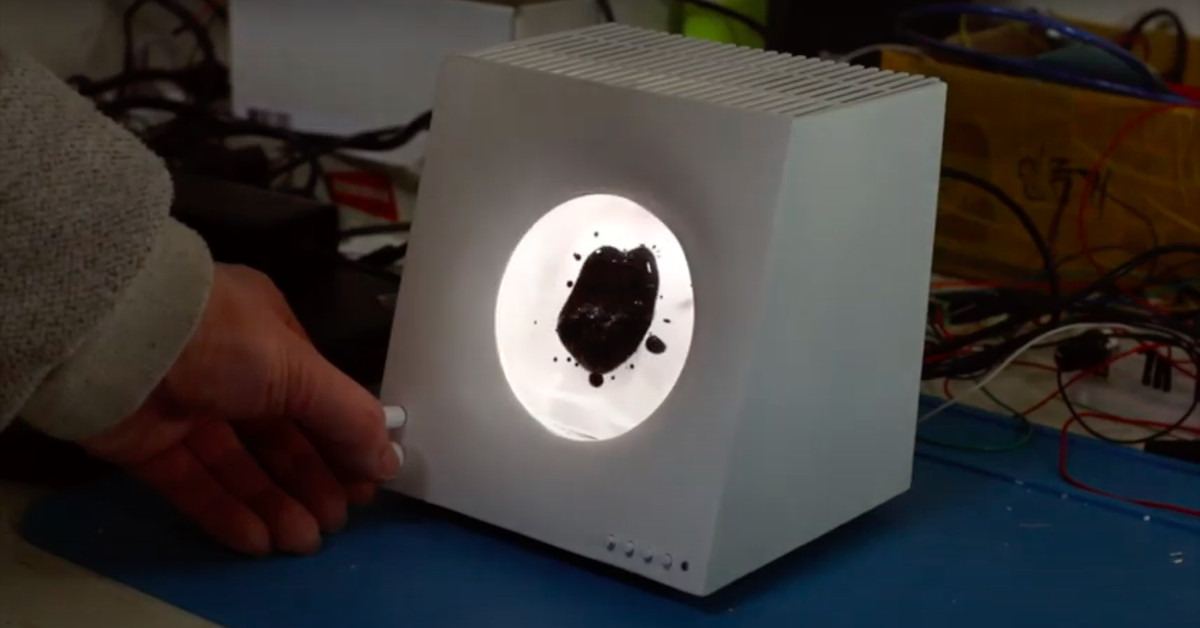
Classical music has been surprisingly slow to embrace podcasting, a medium ideally suited to illuminate its sounds and stories.
Established ones have evolved; "Aria Code," hosted by the cross-genre luminary Rhiannon Giddens, has found new depths of poetry and resonance, and the conductor Joshua Weilerstein's "Sticky Notes" is experimenting with approaches to score analysis. Others have joined the field, like the Cleveland Orchestra's "On a Personal Note," which debuted last April with Franz Welser-Möst wistfully reflecting on the ensemble's final gathering before the pandemic closed its hall.
One even breaks new ground: "Mission: Commission," presented by the Miller Theater at Columbia University. Most classical podcasts tend to take an anthology approach, with each episode focusing on a specific work or recording. But this Miller series, which began on April 13, follows three composers over the course of six weeks as they create short pieces that will premiere on the finale, May 18.
Rarely are audiences granted this kind of insight into a composer's process. New works might be given a brief introduction from the stage, a program note or some advance press. What often gets lost is the story of creation — the hiccups and dead ends, the thrill of discovery. And that is central to "Mission: Commission," a collection of audio diaries and interviews with Melissa Smey, the Miller Theater's executive director.
In a way, the concept is an extension of the Miller's invaluable Composer Portraits series, which devotes an entire program to a single artist, often with interludes of onstage conversation. The composers on the podcast are Marcos Balter, Courtney Bryan and Augusta Read Thomas — artists with enough differences in temperament, style and location to demonstrate that no two paths to a premiere are the same.
They introduce themselves in the first episode, accompanied by samples of their music. Thomas, known as Gusty, describes her practice as a kind of captured improvisation, while Bryan emphasizes the importance of collaboration and Balter describes his work as nonlinear, which he admits might be in conflict with the linear narrative of a typical podcast.
The first episode is suspiciously optimistic, a spirit which doesn't entirely change in subsequent installments but is complicated by the natural ups and downs of creation. Thomas, after feeling as if her piece is coming together, abandons a section of it after about 80 hours of work; later, she shares that when she is writing something, "it takes over my whole self," and that it is done when she can finally sleep through the night.
"Mission: Commission" isn't the only podcast to feature Bryan, who was recently a guest on the essential "Trilloquy" — a show that during the pandemic year changed its format, left American Public Media and became the property of its hosts, Garrett McQueen and Scott Blankenship.
A much gentler experience is not a podcast per se, but rather an Audible Original soothingly narrated (and featuring new recordings) by Yo-Yo Ma , the superstar cellist and global ambassador of sonic good will.
The Sound of Music Lifts Young Musicians Souls – NBC 5 Dallas-Fort Worth
"Everybody who chooses music and chooses to practice it... does it largely because they love connecting with people," Joseph Kuipers said. "Sometimes absence does make the heart grow fonder."
Kuipers is the director of the Texas Cellos, a student cello choir that started practicing during the pandemic.
"As soon as I went to rehearsal, first thing I told my mother was that was the most fun I've had on the cello in a good year," 14-year-old cellist Jaden Ouyang of Dallas said. "It was something I didn't know I needed," 18-year old cellist Marlon Florez of Dallas said.
"It is a universal language and it is something that touches us in so many ways," Kuipers said. "We make something beautiful that makes this world a little better."
Casey Wasserman Launches Wasserman Music, Bolstered By Paradigm – Deadline

“I have worked side-by-side with this remarkable group of people to build a blueprint for success and I am continually impressed with their tenacity and care for both their clients and the business. But most important is our shared commitment to cultivating a culture of forward progress so this new business appropriately reflects the artists and fans we serve,” said Wasserman in a statement. “This is a dynamic opportunity to create new collaborations between the family of brands and talent that Wasserman currently represents in a meaningful and impactful way, and I am excited to get started.”
In a lean-in on the diversity front, Wasserman Music has simultaneously forged a partnership with the national advocacy organization Color Of Change, as part of the launch.
Some of the artists on Wasserman Music’s roster include Kenny Chesney, Coldplay, Billie Eilish, Imagine Dragons, The Lumineers, Dave Matthews Band, Janelle Monáe, Kacey Musgraves, Old Dominion, Phish, Ed Sheeran, Lorde, Sturgill Simpson, Black Pumas, Brandi Carlile, Tyler Childers, Kaytranada, Normani, Run the Jewels, Tash Sultana, Diplo, DJ Snake, Flume, Jack Harlow, ODESZA, and Skrillex.
Wasserman was represented by Sullivan & Cromwell and Manatt, Phelps & Phillips, LLP. J.P. Morgan Securities LLC acted as Wasserman’s exclusive financial advisor. Paradigm was represented by Venable LLP.
BRIT music awards to host 4,000-strong audience in UK pilot event | Reuters
The ceremony, to be held on May 11 at London's O2 arena, will form part of the UK government's Events Research Programme, looking at whether major events can take place in closed environments without social distancing.
This means audience members, of which 2,500 will be key workers who will be gifted tickets, will not have to wear face masks inside the arena but will have to provide proof of a negative lateral flow test result to enter the venue.
They will also have to take a test after the ceremony and provide contact details as part of the country's COVID test and trace system.
"This has been a long tough year for everyone and I'm delighted the night will honour the key worker heroes who have cared for us so well during that time and continue to do so," singer Dua Lipa, who is nominated for four awards, said in a statement.
"They are quite simply an inspiration. The BRIT Awards are always special and this will truly make it a night to remember."
"We're buzzing about the show and working closely with government, the O2 and all our partners to ensure all safety measures and guidelines are adhered to."
Reuters, the news and media division of Thomson Reuters, is the world's largest multimedia news provider, reaching billions of people worldwide every day. Reuters provides business, financial, national and international news to professionals via desktop terminals, the world's media organizations, industry events and directly to consumers.
This speaker uses dancing ferrofluid to visualize music - The Verge

A speaker made by artist Dakd Jung, spotted by Gizmodo , visualizes music with ferrofluid, a liquid filled with tiny magnetic particles. The ferrofluid, a viscous black blob, reacts to an electromagnetic device and dances around in sync with the sounds being played.
The video shows Jung's process for putting the speaker together: treating the glass container so the ferrofluid won't stick, sanding the 3D-printed casing, and wiring up the electromagnetic device. The full prototype in action is a little less mesmerizing than his initial test that's shown in the video because the blob breaks apart, but Jung says the speaker is still in development. He's used ferrofluid in artworks before, including a huge ferrofluid panel and a ferrofluid "pond."
The liquid has been used to visualize music before, like in the video below, but having it in a closed container is much more appealing because it's a very messy substance. Plus it's just more fun to have a lava lamp responding to your tunes than a vat of liquid chilling next to your speaker system.
Canada Pledges $56 Million to Aid Music Economy | Billboard

After a year of unprecedented struggle, the Canadian government is pledging to inject badly needed emergency funding into the country's depleted music economy.
"This budget is about finishing the fight against COVID," the government states in the foreword of its 725-page document. "It means providing Canadians and Canadian businesses with the support they need to get through these final, third-wave lockdowns, and to come roaring back when the economy fully reopens."
Before it becomes law in Canada, the budget still needs to receive "Royal Assent," the final stage of approval for a bill to become an act of Parliament.
Short Hits: Mid-April music releases have something for old-heads and new-gen fans – The
The passage of the week means the gift of Friday releases has come yet again. April 16 came with the release of Conway the Machine's new album "La Maquina." For those interested in some cutting-edge yet nostalgic New York boom-bap hip-hop, Conway is your go-to. Perhaps you are looking for some music with a southern flare; look no further than YSL Records' new album "Slime Language 2," curated by label boss Young Thug.
Coming off of an insane performance in 2020, Conway is back with his second contribution of the year, "La Maquina." The album is a slender eleven songs, clocking in at just around 41 minutes total. The production credits are more varied than the usual Conway album. There are of course the Alchemist and Daringer produced tracks you expect from Griselda. In addition to Conway's frequent collaborators, big-name music engineers like Murda Beatz, Don Cannon and Cardiak back Conway's bars.
"La Maquina" has a variety of features. Conway's own drum work artist Jae Skeese is featured three times. With those features, he puts in a lot of work at establishing why he belongs on a beat with Conway. On the track "200 Pies," Conway and 2 Chainz show stellar chemistry as they spit over a sweet vocal sample from The Alchemist. To wrap the album up, Conway makes it a family occasion, bringing in his brother Westside Gunn and cousin Benny the Butcher. Daringer supplies the electric guitar-influenced beat. Benny drops some immaculate rhymes, starting the track off with the line, " You ain’t a shooter, n—-, you Ben Simmons , the J don’t work. / With the Draco, I’m like Jose Canseco, the way I played in dirt. / I made it work, before I slid home, I lined the bases first."
Conway's new album "La Maquina" is a strong addition to Conway's discography. As an individual work, it does not top the bar Conway set last year with "From King to a God," but it does remind all hip-hop fans why The Machine made that transition last year.
Gathering the roster of YSL Records, Young Thug adds "Slime Language 2" to his long discography. The compilation album is the sequel to the first "Slime Language," released in 2018.
For the album, Thug brought together a huge collection of artists and engineers. The star-studded album features an insane feature list which includes the likes of Drake, Future and Kid Cudi. Thug also gets help from New York rapper Rowdy Rebel on the towering track "Came and Saw", a banger backed by Wheezy's orchestra-like beat. Gunna is featured on a number of tracks, adding his elegant vocals which juxtapose Thug's unpredictable style perfectly.
The album does have some inconsistencies, mainly because of the extensive 23-song tracklist. It clocks in at an hour and fifteen minutes, which is long even considering Young Thug's prolific work ethic.
The inconsistencies with pacing only take away from the album slightly. There are a lot of highlights on this album. Track one to seven are top-notch, and towards the end of the album, some of YSL Records' younger talent is showcased and given their own tracks.
Throughout the entire album, Young Thug wows time after time with his signature style. His versatility remains inexplicable. No matter who he is paired with on a song, he simultaneously brings the best out of them while constantly bringing something new to the track on his behalf.
Music and tech team up to cut the milliseconds | Reuters

Michele Benincaso, founder of Elk, poses with a guitar in his office in Stockholm, Sweden, April 14, 2021. REUTERS/Supantha Mukherjee
Musicians desperate to work together in harmony while kept apart by COVID-19 lockdowns have been collaborating with tech companies to shave milliseconds from delays on their online connections, driving innovations that will transcend music.
The pocket-sized device cuts the lag from around 600 milliseconds, which would make two performers sound out of sync, to roughly 20 milliseconds, which is no greater than if the performers were in the same room.
"That was shocking to me that technology has advanced that far," said soprano Anne-Marie MacIntosh, who is performing in the production scheduled to open to socially-distanced, drive-in audiences on Friday.
Terrified of throat infections, singers tend to be germaphobic at the best of times, which makes digital technology like the Aloha attractive with or without a pandemic.
While innovations such as the Aloha can work with the existing internet infrastructure, the rollout of 5G, which promises speeds 10 to 20 times faster than 4G wireless networks, could spur even more dramatic advances.
The likes of Verizon and Ericsson intend to take advantage of 5G to overcome latency issues for a wide range of industries. Digital surgery, self-driving cars, gaming and virtual reality are some of the areas likely to benefit.
"We are just scratching the surface of how transformative this technology is going to be," said Nikki Palmer, chief product development officer at Verizon.
Matthew Shilvock, general director of the San Francisco Opera, said technology had enabled the upcoming Rossini production to be more experimental and transform the backstage environment into part of the set.
Music Therapy Found to Significantly Improve Sleep Quality in Older Adults

Matthew is an associate editor of The American Journal of Managed Care ® ( AJMC ®). He has been working on AJMC ® since 2019 after receiving his Bachelor's degree at Rutgers University–New Brunswick in journalism and economics.
Music therapy among older adults was associated with significant improvements in sleep quality, with sedative music cited as more effective than rhythm-centered music.
Sleep quality in older adults may be significantly improved through music therapy, particularly through slow-tempo, soft-volume, and smooth melodic music, according to study findings published today in Journal of the American Geriatrics Society .
Recently, a systematic review and meta-analysis of randomized controlled trials confirmed that listening to music is a potentially successful nonpharmacological intervention for improving sleep quality in adults.
As the researchers explain, there are 2 classifications of music: (1) sedative, which is characterized by a slow tempo of 60 to 80 beats per minute, soft volume, and smooth melody, and (2) rhythmic, which is characterized by fast tempos, loud volume, and rhythmic patterns.
"Based on psychophysiological theory, listening to sedative music can improve sleep by modulating sympathetic nervous system activity and the release of neuroendocrine levels of cortisol, thereby lowering levels of anxiety and stress responses," added the study authors.
They selected 5 randomized controlled trials that met inclusion criteria, totaling 142 participants in the music therapy groups and 146 participants in the control groups. Each participant was a community-dwelling adult whose listening duration ranged from 30 minutes to 1 hour over a period ranging from 2 days to 3 months.
Participants were observed for the primary assessment of sleep quality, measured via the Pittsburgh Sleep Quality Index (PSQI), with subgroup analyses also conducted to explore whether the effectiveness of music intervention differed by treatment durations, as measured in weeks, as well as whether effectiveness varied by music type (sedative or rhythmic).
In their findings, significantly better sleep quality was reported in participants of the music therapy groups compared with those who did not listen to music (mean difference (MD), −1.96; 95% CI, −2.23 to −1.73; P = .003), with sleep quality further improved among people listening to music for longer than 4 weeks (MD, −2.61; 95% CI, −4.72 to −0.50; P = .02).



No comments:
Post a Comment